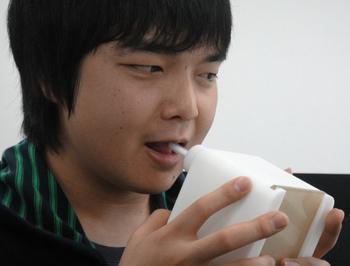The Kiss Transmission Device was recently created in a lab in Japan. This is essentially an internet connected French kissing machine. Yes, you read that correctly. It is a machine that allows you to share actual French kisses via the internet. Okay, they are not actual French kisses…but kind of.
 A user of the device caresses an internet connected straw-like mechanism with their tongue, causing the device to transfer the motion to a second straw-like mechanism, ostensibly located in the mouth of a romantic partner. Developers hope eventually to make the device more “tongue like” by adding personalized flavor, moisture and breathing patterns.
A user of the device caresses an internet connected straw-like mechanism with their tongue, causing the device to transfer the motion to a second straw-like mechanism, ostensibly located in the mouth of a romantic partner. Developers hope eventually to make the device more “tongue like” by adding personalized flavor, moisture and breathing patterns.
The developers view this as a device that will aid in the maintenance of long-distance romantic relationships, allowing geographically separate partners to connect on a physical level. They also talk about marketing celebrity kisses—allowing users to swap spit (er, swap straw movements) with the likes of Justin Bieber or any other celebrity willing to sell a physical piece of hir sexuality. more...








